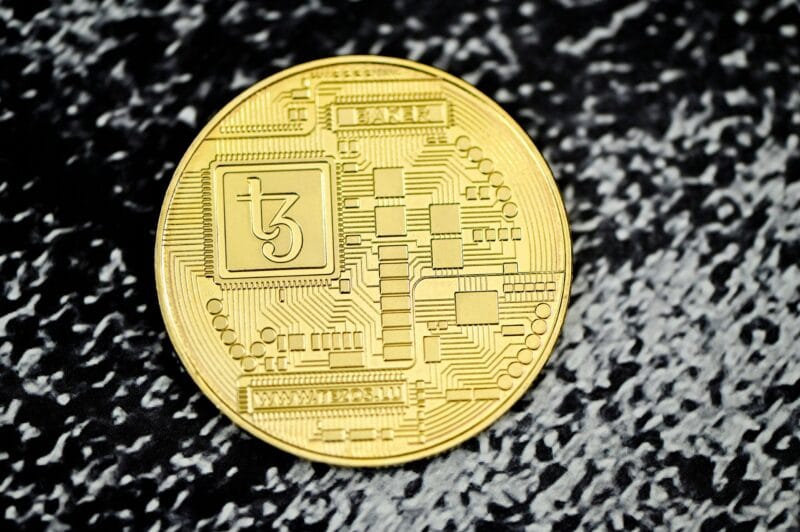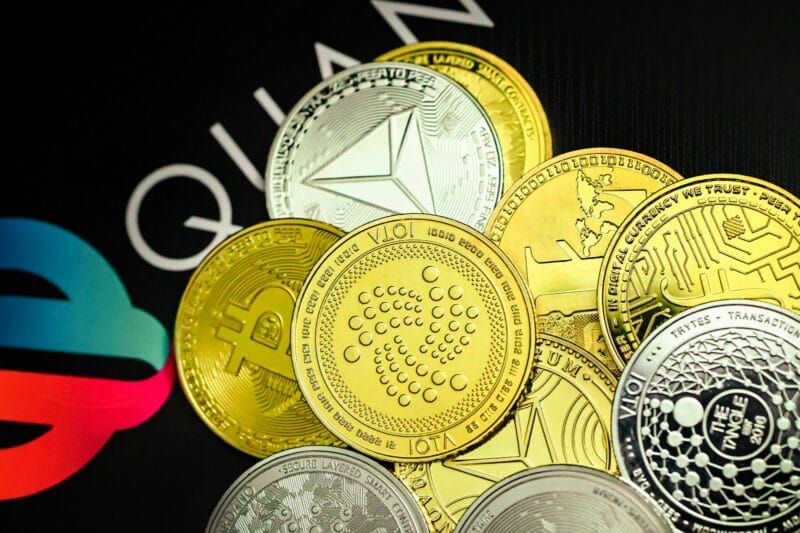Introduction to Bitcoin and Cryptocurrency
Bitcoin for children ▶︎ Bitcoin is a type of digital money, often referred to as a cryptocurrency. Unlike the paper currency we use every day, such as dollars or euros, Bitcoin exists solely in electronic form. One of the most exciting aspects of Bitcoin is that it operates on a system called blockchain technology. This system is like a public ledger that keeps track of all Bitcoin transactions securely and transparently. Think of it as a big notebook that everyone can see, which records all the trades of Bitcoin accurately and prevents anyone from tampering with it.
So, what makes Bitcoin different from the money we know? Firstly, it is decentralized, meaning no single person, company, or government controls it. This is important because it allows people to make transactions freely without interference, much like trading stickers or toys with friends without needing a teacher to supervise. The lack of control by banks and governments is attractive to many because it means anyone can participate in this digital economy without restrictions.

Moreover, Bitcoin is not only a means of exchange; it also represents innovation and the future of finance. Kids should understand that cryptocurrencies can be transferred easily and quickly over the internet, making international trade simpler and borderless. As technology continues to evolve, the relevance of Bitcoin and other cryptocurrencies may grow, potentially shaping the way we think about money.
By grasping these fundamental concepts of cryptocurrency, children can build a solid foundation to appreciate not just Bitcoin, but also the technological advancements that accompany it. This knowledge prepares them for further exploration into digital currency and the broader implications it holds for the world of finance.
Why Teach Kids About Bitcoin?
In today’s rapidly evolving digital landscape, educating children about Bitcoin and cryptocurrencies has become increasingly important. Financial literacy is a fundamental skill, and understanding the concepts related to Bitcoin can significantly empower young minds. As the world progresses toward a more digital economy, familiarity with cryptocurrencies introduces children to essential economic principles, enhancing their overall comprehension of finance.
The future of currency is shifting; traditional financial systems are adapting to embrace digital alternatives like Bitcoin. This shift is indicative of a broader trend towards decentralization and the growing impact of technology on monetary transactions. By introducing children to the basics of Bitcoin, we prepare them for a future where cryptocurrencies may play a vital role in daily life and commerce. Knowledge of Bitcoin can also foster critical thinking skills, as children learn to navigate issues such as digital security, investment strategies, and the implications of blockchain technology.
Moreover, teaching kids about Bitcoin encourages them to grasp the significance of technological advancement in shaping our economy. Children are digital natives, often exposed to technology at a young age. By aligning financial education with their inherent familiarity with digital tools, educators can engage kids more effectively, making the learning process enjoyable and relevant. Understanding Bitcoin empowers children to think innovatively, equipping them with skills pertinent to their future endeavors—whether in finance, technology, or entrepreneurship. Ultimately, familiarizing children with the principles of Bitcoin cultivates a generation that is better equipped to participate in the modern economy and contribute meaningfully to its evolution.

Bitcoin for children ▶︎ Basic Concepts to Cover
When introducing children to Bitcoin, it is essential to start with the basic concepts that underpin this digital currency. One fundamental idea is the notion of value. Explain to children that value represents what someone is willing to pay for a particular item, including Bitcoin. Relatable examples, such as comparing Bitcoin to trading cards or toys, can help them grasp this abstract concept. Just like a rare trading card might be worth more than a common one, the value of Bitcoin can fluctuate based on demand and availability.
Next, it is crucial to discuss the concepts of buying and selling Bitcoin. You can illustrate this by using familiar scenarios, such as a lemonade stand. When kids set up a stand, they take money (like Bitcoin) in exchange for lemonade (goods or services). Describe how people can buy Bitcoin through exchanges, where they trade traditional money for the cryptocurrency, similar to exchanging cash for candy at a store.
Another essential element to cover is digital wallets. A wallet, in this sense, is not physical but rather a digital means of storing Bitcoin. Explain the concept of having a “wallet” for their Bitcoin, where they can keep it safe, just as they would store their allowance in a piggy bank. Additionally, you can mention the importance of keeping the wallet secure and private, emphasizing the necessity of protecting their funds much like guarding their allowance from theft.
Lastly, introduce the concept of mining in a simple manner. Explain that mining is how new Bitcoin is created and transactions are confirmed. You might liken it to a treasure hunt where miners are solving puzzles to find new pieces of Bitcoin. This analogy can help children visualize the process while maintaining their interest in the topic. By using engaging examples and relatable analogies, teaching kids about Bitcoin becomes more accessible and enjoyable.
Engaging Learning Activities
Teaching kids about Bitcoin and cryptocurrency can be a rewarding experience, especially when incorporating engaging and interactive learning activities. These activities not only stimulate interest but also reinforce the foundational principles of Bitcoin in a practical and memorable way. One effective approach is to create a simulated marketplace where children can use play money to buy and sell items. By assigning values to various items and allowing children to negotiate, they can gain insights into the concepts of value, trading, and the basic workings of transactions—core elements of Bitcoin economics.
Another fun activity is blockchain crafting. This hands-on project involves using building blocks or tokens to represent transactions in a blockchain. Children can form chains by connecting their blocks as transactions are completed, allowing them to visualize how information is aggregated into blocks. This not only entertains but also provides a clear representation of how Bitcoin transactions are grouped and recorded in a blockchain, enhancing their understanding of this important aspect of cryptocurrency.
Organizing a Bitcoin scavenger hunt is another engaging way to reinforce learning. In this activity, children can search for virtual or real-life items that represent various aspects of Bitcoin and cryptocurrency, such as wallets, exchanges, and mining equipment. Each item can be accompanied by a brief explanation, making the scavenger hunt both fun and educational. Additionally, incorporating games such as crypto bingo or quiz competitions can further solidify their knowledge. By framing questions around Bitcoin fundamentals and cryptocurrency-related terminology, the children can learn through active participation.
By engaging in these hands-on and interactive activities, children can grasp complex concepts surrounding Bitcoin and cryptocurrency more effectively. Implementing such lessons can foster a deeper appreciation for the technology, potentially inspiring the next generation of innovators in the field of digital finance.
Using Visuals and Tools
In the quest to teach Bitcoin to children, leveraging visuals and interactive tools is imperative for effective learning. Children often grasp complex concepts more readily when presented with engaging visual aids. Illustrations and diagrams can significantly demystify the abstract nature of cryptocurrencies like Bitcoin. For instance, a simple infographic illustrating how Bitcoin transactions work can offer a clear, step-by-step guide that is more digestible for young minds.
Moreover, videos tailored for younger audiences can serve as entertaining yet informative mediums. Through animations, children can witness the journey of Bitcoin as it moves from one wallet to another, experiencing the process in a dynamic, visually stimulating format. Platforms such as YouTube host various educational channels that focus on cryptocurrencies, often breaking down intricate concepts into relatable narratives aimed at younger viewers.
In addition to traditional mediums, utilizing apps specifically designed for children can enhance their understanding of Bitcoin. These applications often gamify the learning process, allowing kids to simulate transactions, manage virtual wallets, and explore the world of Bitcoin in a fun and engaging way. By integrating gamification, children can learn through play, which not only keeps them motivated but also reinforces their comprehension of essential concepts.

Moreover, incorporating interactive presentations or slideshows during lessons can facilitate an engaging discussion about Bitcoin’s role in the evolving digital economy. Utilizing tools such as virtual whiteboards can encourage participation, allowing children to convey their ideas and ask questions as they visualize the cryptocurrency’s mechanics alongside their peers.
In conclusion, the strategic use of visuals and interactive tools in teaching Bitcoin can significantly enhance children’s understanding. By embracing a variety of resources, educators and parents can foster a learning environment that encourages curiosity and engagement, ultimately leading to a more comprehensive grasp of this innovative currency.
Discussing Risks and Security
When introducing the concept of Bitcoin to children, it is vital to discuss the associated risks and emphasize the importance of security. One of the most significant risks related to cryptocurrencies, including Bitcoin, is their inherent volatility. The value of Bitcoin can fluctuate dramatically within a short time frame, which may lead to significant financial losses. Children should understand that investing in Bitcoin or any cryptocurrency is not without risks and that prices can rise and fall unpredictably.
Additionally, online safety is a crucial topic to cover. As children engage with the digital world, they must be aware of various threats that can jeopardize their financial security. This includes phishing attacks, where malicious actors attempt to deceive users into providing private keys or passwords by pretending to be legitimate services. Teaching kids how to identify suspicious websites and to verify the authenticity of online sources is essential in fostering a safe online environment.
Another aspect of security involves protecting personal information. It is important to instruct children that they should never share sensitive information, such as their cryptocurrency wallet addresses or private keys, with anyone. This knowledge empowers them to keep their digital assets protected from unauthorized access. Additionally, it is advisable to discuss the importance of using strong passwords and enabling two-factor authentication when managing digital wallets. Responsible behavior in handling cryptocurrencies will not only help safeguard their investments but also instill a sense of financial responsibility.
Overall, discussing the risks associated with Bitcoin while emphasizing security measures ensures that children develop a well-rounded understanding of cryptocurrencies. Through informed discussions and practical examples, they can learn to navigate the complexities of the digital financial landscape safely, positioning them for a future where such knowledge will be valuable.
Finding Resources and Community Support
Teaching children about Bitcoin can be a rewarding endeavor, but it often requires a variety of resources to make the learning process engaging and effective. Numerous educational materials, including books, websites, and online courses, are available to guide parents and educators in introducing this innovative currency to younger audiences. For instance, there are books specifically designed to simplify the complex concepts surrounding Bitcoin, making them accessible for children. Titles such as “Bitcoin for Kids” or “The Basics of Bitcoins and Blockchains” can be used as foundational texts.
In addition to books, various websites and online platforms provide interactive learning experiences about Bitcoin. Resources such as Khan Academy, which has free content on cryptocurrencies, or specialized educational sites like CryptoKids, offer games and quizzes that can reinforce learning in a fun manner. Utilizing these platforms can help parents create engaging lessons that go beyond traditional education.
Community support plays a crucial role in the learning process. Local libraries or community centers often offer workshops and classes on technology and finance, which can serve as valuable venues for children to explore Bitcoin under guided supervision. Parents can also look into online forums and social media groups focused on cryptocurrency education; platforms like Reddit and Facebook have groups dedicated to parents looking to introduce their kids to Bitcoin and blockchain technology.
Additionally, attending community events, meetups, or webinars centered on cryptocurrency can further provide insights and encourage participation among children. Such experiences can ignite a passion for learning more about the financial technologies that are changing our world. By creating a supportive learning environment through these diverse resources, parents and educators will help children gain an early understanding of Bitcoin, positioning them for a technologically driven future.
Exploring Real-Life Applications
Understanding Bitcoin can be made simpler for children by exploring tangible, real-life applications of this cryptocurrency. One prominent example is online shopping. Many e-commerce platforms now accept Bitcoin as a form of payment. By engaging in discussions about how one can purchase items using Bitcoin, children can better grasp the concept of digital currency. This is an opportunity for kids to relate their online activities, such as buying virtual goods in video games, to the more extensive world of cryptocurrencies.
Another area where Bitcoin can be applied is in charitable donations. Many non-profit organizations are starting to accept Bitcoin donations, allowing individuals to contribute to causes they care about. This application not only teaches kids about financial transactions but also about the impact of giving and how Bitcoin can facilitate global support for various initiatives. Teachers and parents can encourage children to discuss or research specific charities that accept Bitcoin, thus integrating social consciousness with financial literacy.
Investment opportunities represent yet another real-world application for Bitcoin. By explaining how Bitcoin is often viewed as a digital asset, children can learn about the concept of investing. This may include discussions on how the value of Bitcoin can fluctuate, similar to stocks and bonds. Consider introducing them to age-appropriate tools and simulations that allow them to track Bitcoin’s performance. Such platforms often provide visual aids that can help kids understand the potential for profit and loss in a simplified manner.
Utilizing these various practical applications of Bitcoin not only assists children in understanding the concept but also ignites their curiosity about the future of money. By framing Bitcoin discussions with relatable, real-world examples, the learning experience becomes more engaging and relevant for young minds.
Conclusion and Encouragement
In wrapping up this guide on teaching Bitcoin to kids, it is imperative to emphasize the key points that have been addressed throughout the discussion. Understanding Bitcoin, like any other financial concept, requires a tailored approach, especially when engaging young minds. By breaking down complex ideas into simpler terms, utilizing relatable analogies, and incorporating interactive activities, parents can create a strong foundational knowledge of Bitcoin for their children.
Moreover, encouraging an ongoing dialogue about Bitcoin and other cryptocurrencies is essential. The financial landscape is continuously evolving, and familiarity with these concepts can foster not only comprehension but also a sense of empowerment in young learners. Parents should feel motivated to revisit these discussions regularly, allowing children to ask questions and express their thoughts about Bitcoin, which can lead to greater interest in technology and finance.
Additionally, as digital currencies become increasingly integrated into everyday life, teaching children about Bitcoin and its implications prepares them for future financial literacy. Instilling curiosity in kids about how money works in the digital age will not only broaden their understanding of Bitcoin but also enhance their critical thinking skills regarding investments, saving, and spending.
Encouraged by the knowledge gained through this guide, parents can foster a supportive environment where children are welcomed to explore financial concepts freely. The world of Bitcoin and cryptocurrency offers endless learning opportunities, and nurturing this interest early on can significantly contribute to a child’s overall understanding and engagement with the economy.